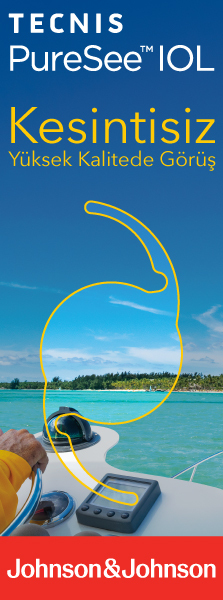2M.D., Ankara Numune Training and Research Hospital, Eye Clinic, Ankara/TURKEY Purpose: To evaluate the clinical characteristics of the patients being followed up with diagnosis of ocular hypertension (OHT) and to determine the risk factors affecting progression in patients who developed glaucoma despite the treatment.
Materials and Methods: Four hundred-sixty eyes of 238 patients who were being followed up in our clinic with a diagnosis of OHT were included in the study. Demographic characteristics, physical examination findings of patients and risk factors affecting prognosis of glaucoma in the patient files were analyzed retrospectively.
Results: Sixty three patients devolped glaucoma (26.47%) after mean 42.2±32.2 (12-180) months of follow-up. Thirty-nine patients (61.9%) showed no progression in glaucoma, whereas 24 patients (38.1%) showed progression. General characteristics of the patients who showed progression were analyzed and compared to general characteristics of patients who showed no progression. Intraocular pressure (IOP) elevation was significant for causing progression while age, family history, the presence of systemic disease, central corneal thickness (CCT), the presence of myopia, and the presence of disc hemorrhage was not.
Conclusion: Follow-up of patients with diagnoses of OHT is important in order to identify patients who developed glaucoma, to determine the time to begin the treatment, and how aggressive the treatment should be. Keeping IOP under control is the most important factor for stabilizing the disease.
Keywords : Ocular hypertension, glaucoma, progression




